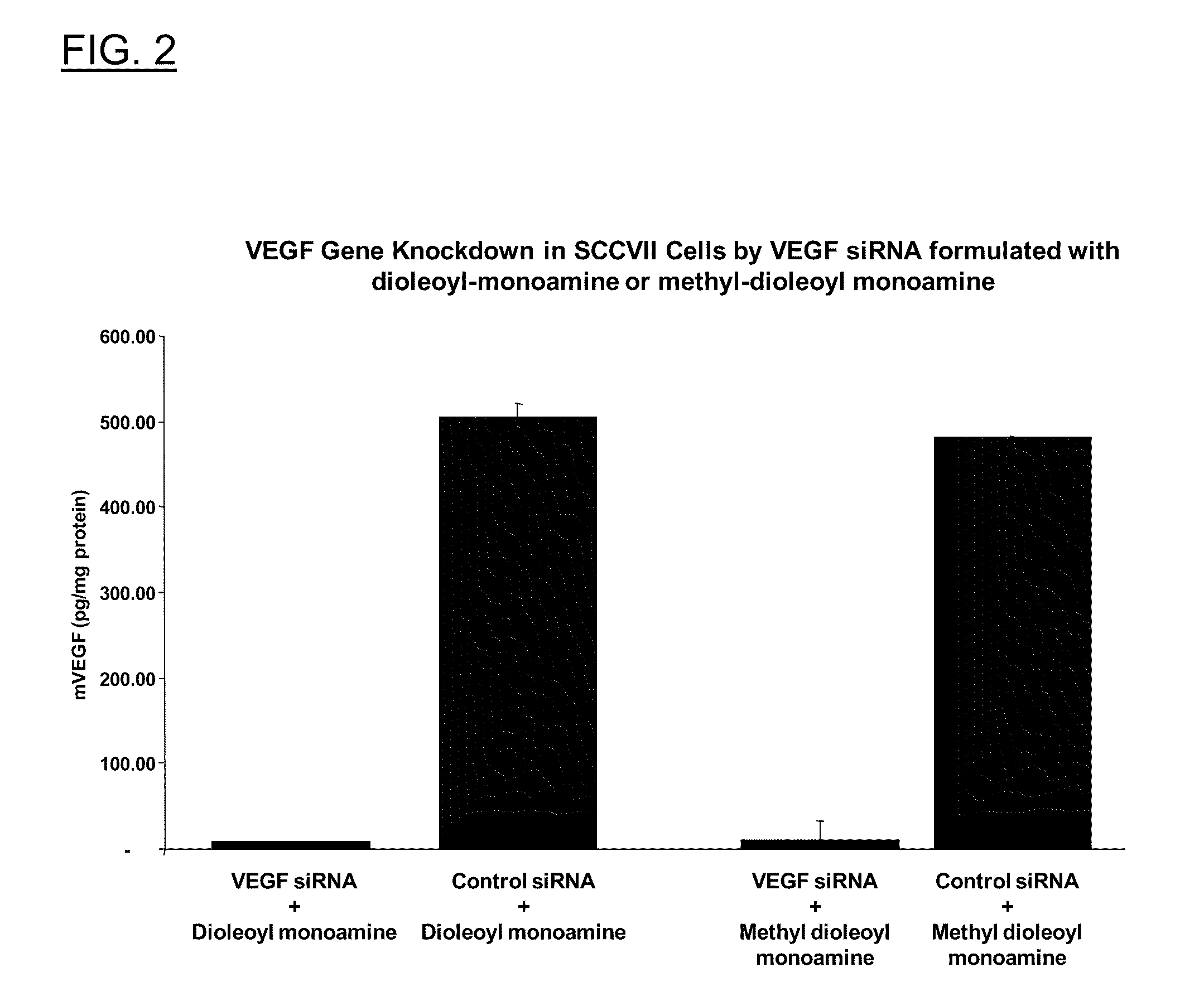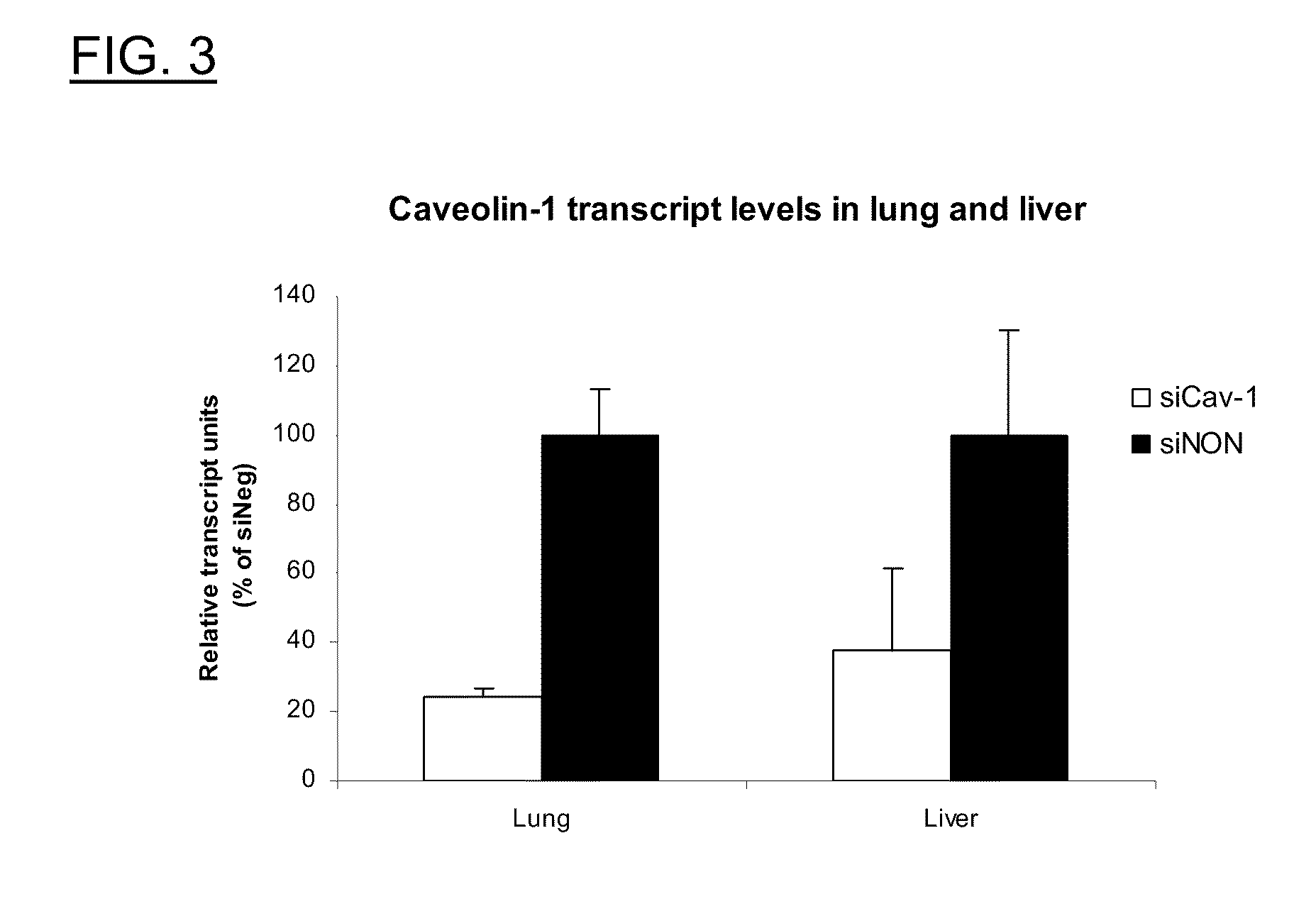Polyamine Derivatives
a polyamine and derivative technology, applied in the field of symmetrical polyamine derivatives, can solve the problems of high toxicity to normal tissues, high trafficking of many compounds into living cells, and inability to meet the needs of human body, so as to improve the efficiency of systemic and local delivery and increase the efficiency of biologically active molecules
- Summary
- Abstract
- Description
- Claims
- Application Information
AI Technical Summary
Benefits of technology
Problems solved by technology
Method used
Image
Examples
example 1
Synthesis of N,N′-dioleoyl tetrakis(aminomethyl)methane (“dioleoyl crossamine”)
[0354]
[0355]Tetrakis(aminomethyl)methane is prepared by a known procedure (Adil, K. et al., Solid State Sciences, 6 (2004), 1229-1235). A 50 mL flask is equipped with a reflux condenser and a magnetic stirrer. The flask is charged with tetrakis(aminomethyl)methane tetrachloride (800 mg, 2.88 mmol), methanol (10 mL) and NaOMe / MeOH solution (2.10 g of 5.457M, 11.50 mmol). The mixture is stirred and refluxed for 4 hours, then cooled. Methanol solution is decanted from the inorganic salts, and the salts are re-suspended in absolute ethanol (15 mL). The suspension is centrifuged, and the combined organics are concentrated in vacuo. The residue is dissolved in methylene chloride (15 mL) and filtered using a syringe (0.45 micron filter) from the remaining inorganic salts. Concentration of the filtrates affords free tetrakis(aminomethyl)methane in a quantitative yield as a white semi-solid material (the residual ...
example 2
2.1. Folate-PEG3400-COOH
[0358]
[0359]170 mg of H2N-PEG3400-COOH (manufactured by Laysan) is dissolved in dry DMSO (2 mL) and dry chloroform (2 mL). Hunig's base (15 μL) is added, followed by addition of Folic acid-NHS ester (60 mg, prepared by a known procedure Lee, R. J.; Low, P. S.; “Methods in Molecular Medicine”, 25, 69-76, April 2000). Additional 80 mg of Folic acid-NHS is added as a solution in DMSO (2.5 mL). The stirred mixture is kept at room temperature for 24 hrs; the chloroform is removed in vacuo, and the residue is diluted with deionized water (60 mL). The resulting homogeneous yellow solution is dialyzed against deionized water, with a few drops of TFA to pH 2-3, using 3500 D cutoff membrane. After six dialysis bath changes the yellow solution is collected and concentrated in vacuo to afford Folate-PEG3400-COOH.
2.2. Coupling with Folate-PEG3400-COOH to obtain “folate-PEG-dioleoyl crossamine” (5)
[0360]
[0361]150 mg of Folate-PEG3400-COOH is dissolved in dry DMSO (2 mL) an...
example 3
Synthesis of N,N′-dioleoyl tris(aminoethyl)amine (“dioleoyl monoamine”) (6)
[0362]
[0363]Oleoyl chloride (75 g, 250 mmol) is heated at reflux with 2,2,2-trifluoroethanol (60 g, 600 mmol) for 16 hrs. After the evolution of HCl ceased, excess trifluoroethanol is removed in vacuo. Vacuum distillation of the residue afforded 87.6 g of 2,2,2-trifluoroethyl oleate as colorless liquid, by 150° / 0.3.
[0364]Tris-(2-aminoethyl)amine (1.45 g, 10 mmol) is dissolved in 20 mL of ethanol. To this solution 2,2,2-trifluoroethyl oleate (5.6 g) is added, and the reaction mixture is refluxed for 24 hrs. The mixture is concentrated in vacuo, the residue is dissolved in 90% acetonitrile / 10% water and acidified to pH 2-3 with trifluoroacetic acid (TFA). Reverse-phase chromatography of this solution on C8 silica (eluent 89.9% acetonitrile / 10% water / 0.1% TFA) affords 1.8 g of N,N′-dioleoyl tris(aminoethyl)amine (“dioleoyl monoamine”) as its trifluoroacetic salt. MS (TFA salt) 675 [M+1]; NMR (CDCl3) δ 7.4 (br, 2...
PUM
| Property | Measurement | Unit |
|---|---|---|
| molecular weights | aaaaa | aaaaa |
| molecular weights | aaaaa | aaaaa |
| molecular weight | aaaaa | aaaaa |
Abstract
Description
Claims
Application Information
 Login to View More
Login to View More - R&D
- Intellectual Property
- Life Sciences
- Materials
- Tech Scout
- Unparalleled Data Quality
- Higher Quality Content
- 60% Fewer Hallucinations
Browse by: Latest US Patents, China's latest patents, Technical Efficacy Thesaurus, Application Domain, Technology Topic, Popular Technical Reports.
© 2025 PatSnap. All rights reserved.Legal|Privacy policy|Modern Slavery Act Transparency Statement|Sitemap|About US| Contact US: help@patsnap.com



